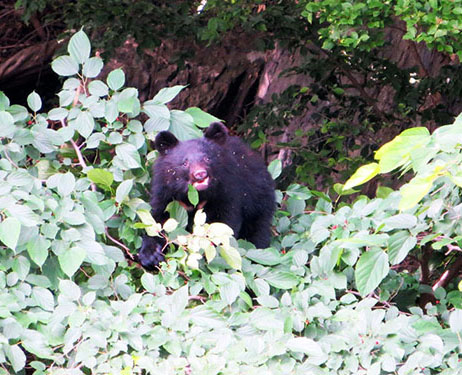
The increase has been particularly high in the mountainous Tohoku region and in some parts of western Tokyo.
On Sept. 12, three men and women in their 60s and 70s who were working in fields near their homes in Hanamaki, Iwate Prefecture, were assaulted by an Asiatic black bear.
The encounter left them with injuries including scratches on their faces and backs.
Prior to the incident, the prefectural government issued bear warnings for the first time in eight years. According to the prefecture's nature preservation division, bears were spotted in 12 cases as of Sept. 19 this fiscal year, which ends in March 2015.
The Environment Ministry said preliminary data show that bears were spotted on 2,080 occasions across Japan from April through May, nearly 40 percent higher than the same period last year, and among the highest figures in the past five years.
In the Tohoku region's six prefectures, bear sightings rose 80 percent to 941 for the April-May period. Seventy-one sightings were reported in Gunma Prefecture and 21 in Tokyo in those months.
With just four or fewer sightings during the same period in Tokyo in the past five years, it is unclear what is behind the spike.
Iwate Prefecture officials and the government-affiliated Forestry and Forest Products Research Institute said the situation can probably be explained by the birth of more cubs than usual, thanks to last year's bumper beechnut harvest.
They also said a shortage of leaves due to outbreaks of gypsy moths may have driven more bears toward human habitats. Bears eat leaves during the spring and summer.
Experts say more bears are likely to appear near human settlements toward winter, as the creature searches wider areas for food to store nutrients in preparation for hibernation.
An anticipated poor harvest of acorns and nuts, a main food source for bears in autumn, is expected to exacerbate the situation.
"A poor beechnut harvest, especially in the Tohoku and Hokuriku regions, is likely to lead to an increase in bear sightings," said Toru Oi, a researcher who heads the Forestry and Forest Products Research Institute's Department of Wildlife Biology.
"All conditions that drive bears into human habitats are being met this year," the bear ecology expert warned.
To avoid attracting the creature, Oi advised people not to leave leftover food or other garbage outside for long periods.
"When in mountainous areas, wear accessories that produce a sound, or clap your hands, to make bears aware of your presence," Oi said.
According to an estimate by the Forestry Agency's Tohoku Regional Forest Office, beech trees will bear few nuts this season in Iwate, Akita and Yamagata prefectures, with poor harvests anticipated in Aomori and Miyagi prefectures.
A Tohoku Regional Forest Office official said the dearth is likely to be the most severe since fiscal 2006, when a record 5,185 bears were captured nationwide and 150 people were assaulted by the animals.



Reader Comments
to our Newsletter